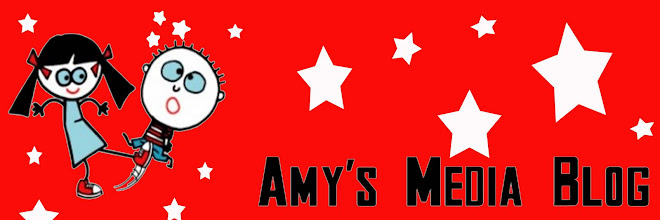11.6.09
Key words
Mise-en-scene: 'Putting in the scene.' Basically everything you see in the frame.
Dialogue: Speaking (What the characters say).
Digetic Sound: Sound that's in the world of TV drama. (what they can hear).
Incidental music: Music that's added on.
Non-digetic sound: Could be sound effects, voice overs, theme tunes etc.
Narrative/structure: Story line
Theme: Ideals/morals explored
Cinematography: Camera work
Dialogue: Speaking (What the characters say).
Digetic Sound: Sound that's in the world of TV drama. (what they can hear).
Incidental music: Music that's added on.
Non-digetic sound: Could be sound effects, voice overs, theme tunes etc.
Narrative/structure: Story line
Theme: Ideals/morals explored
Cinematography: Camera work
10.6.09
22.5.09
Camera movements
Textual analysis
Textual analysis is the process of breaking down a text into its various elements and studying them to analyse how meaning is created. when analysing moving image media (such as film or television) er must examine the following areas:

- Camera work (shots, angles, movements)
- Editing (hows shots have been put together)
- Sound (both digetic and non-digetic)
- Special effects (if there are any)
- Mise-en-scene (costume, make-up, facial expression, props, setting, performance and lighting)

XLS: Extra long shot/wide shot/establishing shot
LS: Long shot
MLS: Medium long shot
MS: Mid shot
MCU: Medium close up
BCU: Big close up
ECU: Extreme close up
P.O.V. Shot: Camera shoots from a characters P.O.V.(Point of view)
Over-the-shoulder shot: Camerashoots over a character's shoulder.

Eye-level: Camera is pointed directly at subject.
High: Camera is looking down on subject, making it look smaller.
Worm's eye: Extreme low angle, camera is very low, looking up.
Canted: Camera is tilted to make subject look slanted.
Bird's eye: Extreme high angle, looking straight down.
21.5.09
What is the purpose of a title sequence?
- to introduce the programme
- tells us the genre/sub-genre of the show
- tells us location/setting
- tells us information about the characters
- it's a warning that the shows about to start
- it gives the show a recognisable identity
- it can give the information about the tone/style/pace
- tells us the period of time the show is set in
Mise-en-scene

Costume:
- He's topless whilst getting ready (shaving, making coffee + breakfast, whilst flossing, whilst putting shoes on)
- Puts on shoes and ties them
- Puts on his top (looks like he's suffocating himself)
- At the end when he walks out of his house, he is dressed in white which makes him look innocent.
Setting:
- Wakes up in bedroom
- Shaves in bathroom
- Cooks in kitchen
- Flosses teeth in bathroom
- Walks outside
Lighting:
- Dark lighting in the kitchen
- Bright in the bathroom
- Daytime lighting at the beginning
- Dark in the room, although it's daytime
- Low lighting
- Dark inside, light outside
Props:
- Razor
- tissue
- meat
- eggs
- knife
- orange
- laces
- flossing string
- coffee maker
- frying pan
- scalpel
Performance:
- Shaves his neck like he's cutting someone's throat
- He ties his shoe laces as if he's strangling a person
- He cuts the orange like a murderer
- The first thing he does is kill a mosquito
- He cleans the blood from his neck with a tissue
- When he was putting on his shirt, he acts like he's suffocating himself
- He uses floss to clean his teeth
Facial expressions:
- Smiles: makes him look like he knows what he's doing
- His eyes are mysterious and eyebrows are bent
- His face is focused forward and it makes him look like a killer
Make Up:
- His eyebrows are thick, his face is fresh - different colour from his beard
- His face is greasy and his lips are shiny
Subscribe to:
Posts (Atom)


